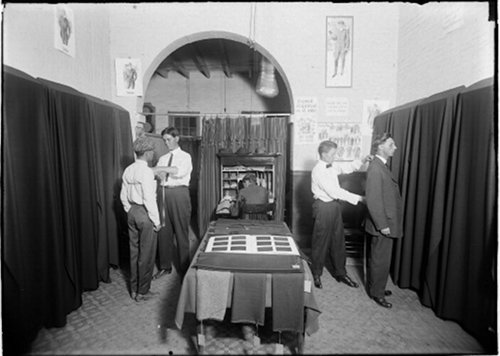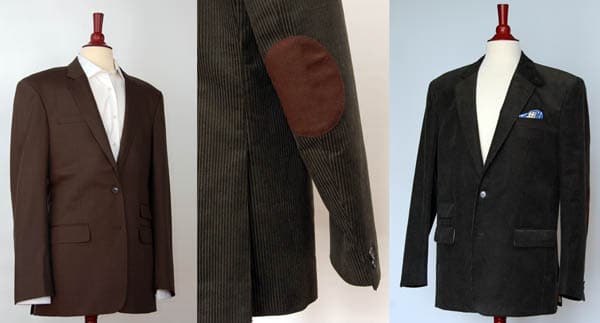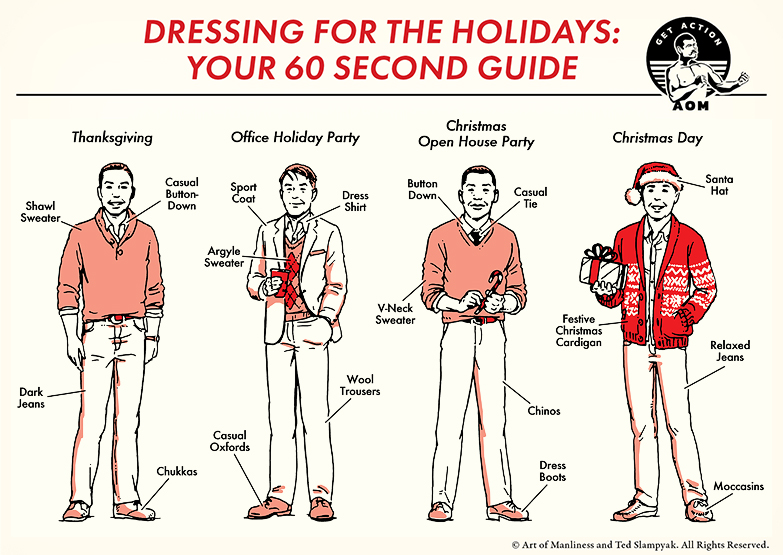
A quality sweater that properly fits is one of the most flattering garments a man can wear. It adds weight to a skinny physique and streamlines a large figure. Functionally it keeps you warm while style wise it can break up the monotonous wearing of dress shirts and slacks to the office. Yet most men know little about sweaters and even fewer take full advantage of all the styles and patterns available. This article will give you a strong understanding of sweater fabrics, fit, and style; the goal being not to change you, but rather expose you to options you might not have considered so you can dress in a manner that best reflects your individuality.
Part 1 – Sweater Fabrics
Sweater Fabric Types
Cashmere Sweaters – The gold standard of sweaters, a pure cashmere sweater can cost hundreds of dollars due to the scarcity of the long downy Kashmir goat hair from which it draws its name. Warm and light as a feather, a cashmere sweater is a substantial investment for any man. My advice when purchasing a cashmere sweater is to ensure 1) it fits perfectly 2) you have occasion to wear it at least four times a year 3) it is of a simple, timeless, dark color and 4) you buy it from a reputable merchant (counterfeit sweaters are a poor investment). Cry once about the price, then wear it every chance you get and feel like a million dollars. If you take care of your cashmere sweater you should get 200+ wears out of it over 10 years.
Wool Sweaters – The oldest and most common quality sweater fabric, wool is the traditional favorite when it comes to looks and function. Wool knitted clothing was historically the clothing of common laborers in rural England; today its proven ability to retain heat, fine hand, and history make it a favorite of men all over the world. Wool sweaters do, however, require great care as they are very susceptible to damage from heat and rough handling, especially when wet (wool loses 30% of its strength when soaked).
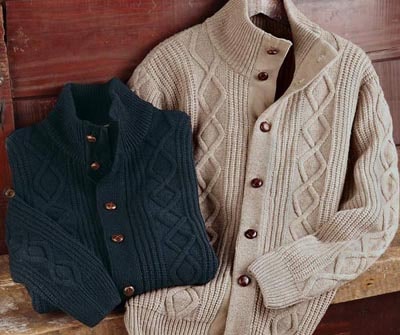
Cotton Sweaters – Sweaters made from cotton fabric (all other factors being equal) are going to be cooler than either their wool or cashmere brethren as their cellulose foundation sheds heat faster. This isn’t a bad thing – sometimes you want a cooler sweater and cotton sweaters can be worn directly on the skin with no irritation. Also, the use of cotton has helped to drive down sweater costs.
Synthetic Fabric Sweaters – In line with cotton, the big advantage of synthetic fabrics is that they have driven down the cost of these garments. Depending on the type of fabric being used, a synthetic fabric sweater can mimic the properties of wool or cotton, oftentimes without the problems of having to take special care of the garment when it comes to washing and handling. Be careful though when purchasing a synthetic fabric sweater – it will in most cases be of a lower quality than its wool/cashmere fiber counterpart.
Blended Fabric Sweaters – Oftentimes you’ll see a sweater made from two or more fabrics; the reason most manufacturers do this is 1) to save money and 2) to increase performance and desired performance properties. This cost savings is often seen with cashmere blends, as a company can call their sweater a “cashmere” sweater when in reality a large part of the sweater is made from less expensive wool or synthetic fibers. Neither bad nor good, this is simply a case where the consumer should learn to read labels and understand that oftentimes you get what you pay for. The second part, increasing performance/desired properties, is why I consider this practice acceptable. Simply put, by mixing in other fibers a sweater manufacturer can create a garment that fits and performs even better than a pure fabric garment.
Sweater Color
Sweater color affects the situations in which a sweater can be worn. Darker colors are typically seen as more formal and conservative, although light colored sweaters are more acceptable in the spring and summer months. Brighter colors, due to the fact they draw attention to the wearer, are less formal but can be great for casual wear and giving the impression of not taking oneself too seriously. Extremely bright colors are best avoided unless you are a performer or highway worker.
Sweater Pattern
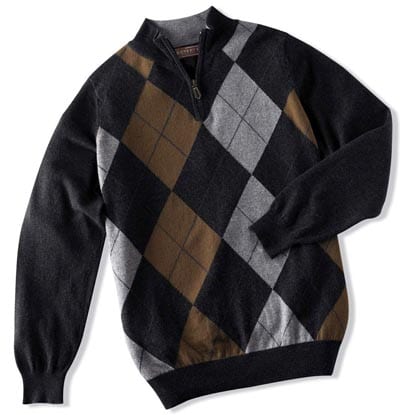
Simple solids are the most formal, with patterns, whether woven in or stitched, making the garment more casual. Argyle is one of the most popular sweater patterns seen on men in the winter months; it’s visually distinctive thanks to its lines and colors. The trick to wearing an argyle sweater successfully is to understand that the sweater’s pattern will be the center of your outfit. Match it with simple items that do not compete with it; also, be aware it will be remembered and should only be worn a couple times a month. Personally, I prefer to wear these sweaters a bit closer fitting to the body under a simple sport jacket. Sportswear sweaters and jerseys, with their unique pattern identifiers, make these types of sweaters casual by affiliation. Great for wear with jeans and suede bucks – not for a suit.
Sweater Weave
Sweater weave affects the heat retaining properties, fit, and level of formality of a sweater. Typically heavy rib patterns will make a sweater thicker, increasing its ability to keep you warm and enabling a former fit. Plain woven sweaters are going to be less elastic, slightly cooler, but the more delicate look gives them a more professional appearance.
Part 2 – Sweater Fit
A $500 cashmere sweater will look comical if it’s too small; if it’s too big it will look like a hand-me-down from your big brother. What is the key to finding a good fit? Learn which brands suit you best, and stick with them. Every clothing brand uses different models that they build their clothing off of – you want to find the line that uses a person who most resembles your body’s build. A large sweater made by Calvin Klein is very different than a large found at Wal-Mart – high end designers make their clothing to fit one in ten men (fit less, but for those lucky few a great fit) – larger manufacturers build their clothing lines to fit most men (thus poorly fit all). Custom sweaters are an option for those willing to pay a bit more.
Altering sweaters is a mixed bag – less expensive sweaters often have parts that are sewn and can be slightly altered. Occasionally you’ll find a master stitcher who can even rebuild parts of the garment for a reasonable price. Many times though the alterations needed are beyond the skill set of an average seamstress and most skilled tailors will not touch this specialty work.
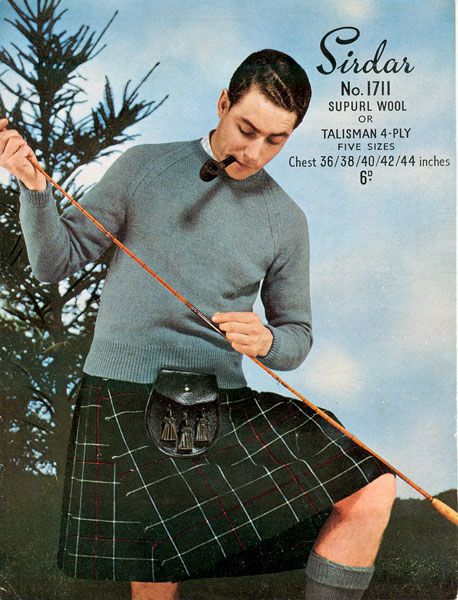
Sweaters can be paired with pants….or a kilt.
Part 3 – Sweater Style
Men’s Turtleneck Sweaters – A dark colored, well-fitted quality turtleneck sweater should be a staple in every man’s wardrobe; paired with dark trousers it will make almost any man look leaner, taller, and more stylish. It can be worn with a suit, with a sports jacket, or simply by itself. Adopted by creative professionals, it nonetheless is at home on a submarine or the streets of San Francisco.
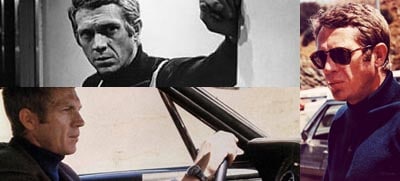
All the proof you need to wear a Turtleneck Sweater
Men’s V-neck Sweaters – As the sweater’s name indicates, the distinguishing feature of this style is the low cut “V” neckline. A perfect compliment for a button-down collar dress shirt (with or without a tie), the “V” line cut helps draw attention to the face and creates a leaner profile illusion. This style has been successfully worn by a wide variety of men, from Rock Hudson to Albert Einstein, and is safe for wear in most business settings, assuming the sweater’s fabric is solid. Be careful though of designer V-neck sweaters that attempt to stand out by cutting the V too low – after more than a few inches, the lines start to have an effeminate look and are best avoided.

Men’s Crew Neck Sweaters – Of all the sweater styles, the crew neck sweater is the most dominant in terms of what it reveals of the clothing underneath – which is next to nothing. The advantage here is what you wear underneath, as long as it cannot be seen, is inconsequential. That is until you need to remove the sweater. Again, the button down collar is a natural compliment to this sweater (although most of it will be covered). Being the most common style on the market, you should pay special attention to the fabric type to ensure the sweater performs as you’d like it to.
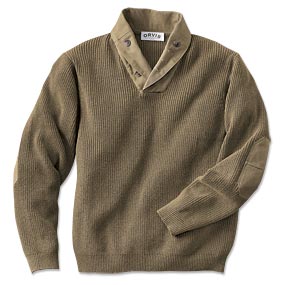
A WWII inspired pull-over makes a handsome choice for casual wear.
Men’s Polo Sweaters – A casual sweater that eliminates the need to wear a dress shirt underneath, it looks best when paired with a sports jacket. Good fit is paramount with this style, and it can be worn tucked into the trousers.
Men’s Cardigan (Zip & Button Down) Sweaters – One of the most versatile and underused sweaters in a man’s wardrobe, they have a stigma of being an “old man’s sweater.” Nothing could be further from the truth – cardigans compliment men of all ages, whether worn over a dress shirt, layered under a sport jacket, or matched with a suit. They are simple to remove and put back on, and are the only sweater type to incorporate a pocket.

Men’s Aran Sweaters – An Irish original, an authentic Aran sweater is a work of art with a weave that declares the wearer’s clan and history. The story goes that these sweaters originally served the dual purpose of keeping a man warm on the open ocean and enabling identification if he was thrown overboard and drowned. Today, they are still made by hand on the Emerald Isle, with each sweater requiring approximately 100,000 stitches! Aran sweaters are best worn over clothing rather than under a sport jacket.
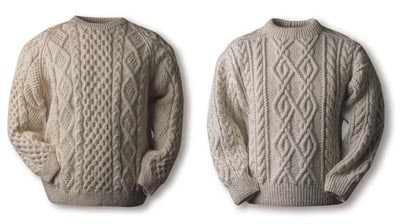
Which is Murphy….Which is O’neil?
Men’s Sweater Vests – Sweater vests are most at home when worn with a suit or sport jacket/odd trouser combination, and they do not have to match the clothing but should rather compliment the trousers and/or jacket. An athletic built man confident in his own personal style can wear one with slacks or quality denim and a dress shirt, where it can give him a more streamlined look by eliminating the contrast between the shirt and pants.
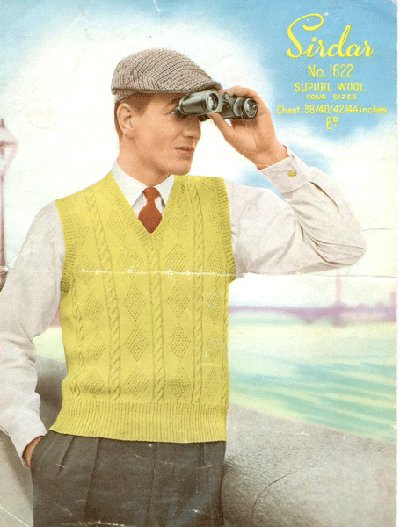
Written by
Antonio Centeno
President, A Tailored Suit
Articles on Men’s Suits – Dress Shirts – Sport Jackets
Join our Facebook Page & Win Custom Clothing



